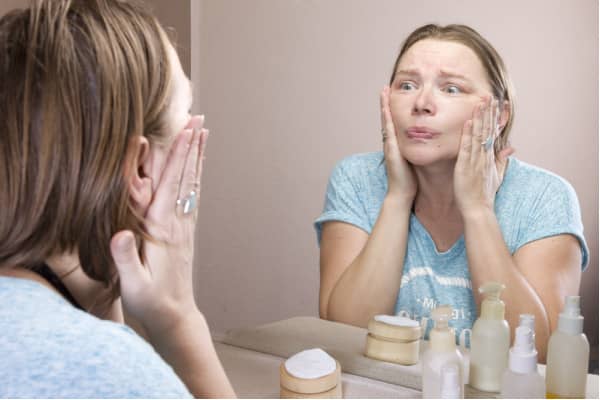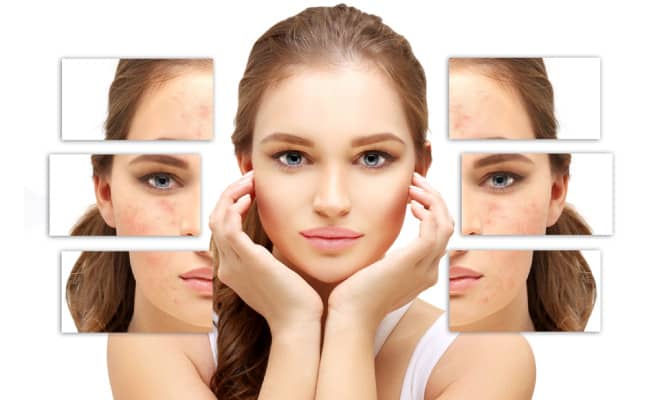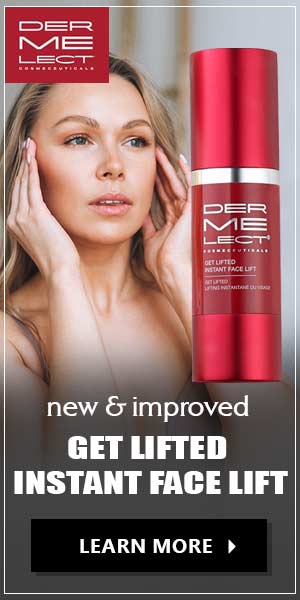Still, covering up and putting your chin down because of acne scars? You don’t need to hide anymore.
Rather than dwell on your growing loss of self-confidence brought about by blemishes on your skin, you should instead take the time to get to know the treatment options available to help heal and repair your skin.
What Are Acne Scars?
According to the American Society for Dermatologic Surgery, acne scars are “usually the result of inflamed blemishes caused by skin pores engorged with excess oil, dead skin cells, and bacteria”.
When the skin heals and even during an ongoing acne breakout, the skin attempts to relieve the inflammation and to repair the breaks and craters that the inflammation has caused your skin.
Different individuals tend to have varying responses to skin inflammation. Here are the two main ways by which these processes are distinguished:
- Single Inflammatory Response:
- Secondary Inflammatory Response:
This is how people who are not prone to scarring respond to skin inflammation.
Here, the skin responds to an invasion which, in the case of acne scarring, is the acne-causing bacteria.
This is how people who tend to scar following a pimple or acne breakout respond.
The skin takes this second phase to help your skin cover-up breaks in the skin, thereby lessening the possibility of further infection but, it comes with a consequence — hyperpigmentation.
Depending on how your skin responds to scarring, you may or may not develop acne scars.
In any case, the reparative action of your skin is to produce and deliver more collagen to the scar sites to try to patch up the damage.
Unfortunately, the patching-up process does not always result in a smooth, even-toned texture thus, the appearance of scar marks.
Causes Of Acne Scars:
Acne scars can be one of the most challenging skin issues anybody can face, whether you are a teenager undergoing multiple hormonal changes or, over 40 and still battling with adult acne.
Acne care requires that you know the causes of acne so that you can effectively implement a strategy to effectively fight acne.
Listed below are the top triggers of acne and the resulting acne scars:
1. Hormonal Changes:

Hormonal Changes – Image/Shutterstock
Whether in adolescence or late in adulthood, hormonal fluctuations cause several body processes and organs, including your skin, to malfunction.
The resulting excess oil when coupled with pollution and foreign bodies being deposited in your pores can easily lead to acne and breakouts.
2. Irritating products:
According to a study of irritating ingredients commonly found in cosmetics, the researchers concluded that fragrances and preservatives are the most irritating allergens commonly found in skincare products.
The study results further highlight that hair dyes, nail lacquers, and sunscreens are among the most highly irritating products that can get into contact with your skin.
3.Pollution:
Exposure to warm and dusty environments can easily invade your skin with impurities that can lead to breakouts.
4.Smoking:

Smoking – Image/Shutterstock
Studies about smoking and acne abound, and while most demonstrate a direct connection.
some find that the two are inversely related.
In a study published in the Journal of Epidemiology, Biostatistics, and Public Health in 2015, the researchers observed that male smokers have the highest risk for developing adult acne.
5.Poor Diet and Exercise:

Poor Diet And Exercise – Image/Shutterstock
Evidence points to the fact that acne has systemic causes.
This is the reason why acne-fighting foods and anti-acne recipes are highly recommended ways to change the way acne-prone skin behaves.
Exercising which helps your body excrete toxins and improve metabolism is a highly recommended adult acne care strategy.
6.Stress and Sleeplessness:

Stress And Sleeplessness – Image/Shutterstock
These two factors, in general, cause your body much confusion because the tendency for you is to bypass your body’s natural circadian rhythm[1] which then suffers proper regulation of your hormones, acting as your body’s switches, thereby causing irregularities in several organs, including your skin.
You May Also Like – Oatmeal Masks That You Should Try For Acne And Scars
Types of acne scars:

Type Of Acne Scars – Image/Shutterstock
There are several ways to treat acne scars, both invasive and non-invasive.
Before a treatment course or procedure can be determined, however, a closer examination of the type of acne scars that specifically plague your skin, based on the different types of acne scars, is necessary.
The list below summarizes the many different acne scar types indicating possibleacne treatments suitable to fade and smoothen these out:
1.Ice-Pick Scars:
Presentation and causes of Ice-Pick Scars:
This type appears as if the skin was punctured several times, boring tiny holes. The scar is indented showing fine holes and a rough surface texture.
How to treat Ice-Pick Scars?
While the inflammation can be treated using the best acne products suitable for your skin and the treatment that you can tolerate, ice-pick scars need professional intervention.
Before considering surgery, you should look into more non-invasive procedures such as microdermabrasion, micro-needling, and laser skin resurfacing.
If the indents are shallow, there’s the possibility that an intensive chemical peel may be able to smoothen out your skin and cause it to regenerate faster to heal your acne scars.
2. Rolling Scars:
Presentation and causes of Rolling Scars:
Just like ice-pick scars, these manifest at a shallower depth but with wider craters that make the skin appear like the rough surface of the moon along with its craters.
These scars commonly follow a hormonal acne treatment.
How to treat Rolling Scars?
This type of scarring can be treated using the same procedures as in ice-pick scars.
However, injecting fat to relieve the wide skin depressions will have to be necessary to even out the skin surface.
3. Boxcar Scars:
Presentation and causes of Boxcar Scars:
This third form of depressed acne scars appears with sharp, well-defined edges.
How to treat Boxcar Scars?
The best ways to heal and smoothen out the appearance of this type of scars are laser treatments, including laser skin resurfacing with possibly a combination of radiofrequency therapy.
These treatments will help stimulate collagen[2] production to patch the depression.
4. Hypertrophic or Keloid Scars:
Presentation and causes of Hypertrophic or Keloid Scars:
This type of scarring manifests excess skin that makes the scar appear higher than surrounding skin tissue.
There’s the possibility that these scars will even out on their own over time to smoothen your skin’s surface.
How to treat Hypertrophic or Keloid Scars?
The best acne scars treatments for this type of challenging skin condition involve steroid injection.
These treatments are directly injected on scar sites to depress raised skin. For maintenance, topical creams, including corticosteroids, may also be recommended.
Combining treatment therapy with micro-needling can also help remove the scar marks.
5. Pigmentation Scars:
Presentation and causes of Pigmentation Scars:
These acne scars tend to either become hyperpigmented or, hypopigmented.
Whichever the case, these conditions tend to make the scarring more visible due to a marked difference in skin color on and around the scars.
How to treat Pigmentation Scars?
Many times, treatment is probably not necessary. However, if you want to see improvements sooner, you should consider professionally administered chemical peels, microdermabrasion, and laser treatments.
FAQ’s:
Que: Which type of acne scar is most difficult to treat?
Ans: The most difficult type of acne scars to treat is icepick acne scarring. Ice pick scars are narrow, V-shaped scars that go deep into the skin.
Que: What’s the best treatment for acne scars?
Ans:
- Home skin care
- Soft tissue fillers
- Steroid injection
- Laser resurfacing
- Other energy-based procedures
- Dermabrasion
- Chemical peel
- Skin needling
Que: Is Bio oil good for scars?
Ans: Bio-Oil has been proven to help reduce the appearance of scars and stretch marks.
Que: Do scars go away naturally?
Ans: Scars are a natural part of the healing process. Most will fade although they never completely disappear.
Conclusion
Wearing acne scars on your skin can be one of the most embarrassing, confidence-depressing skin issues you or anybody else may have to deal with.
While many high-performance acne scar treatments are available, there’s still nothing that comes close to acne prevention.
When you can prevent inflammation, you don’t have to ever worry about acne scars.
 By Wendy Gould
By Wendy Gould





